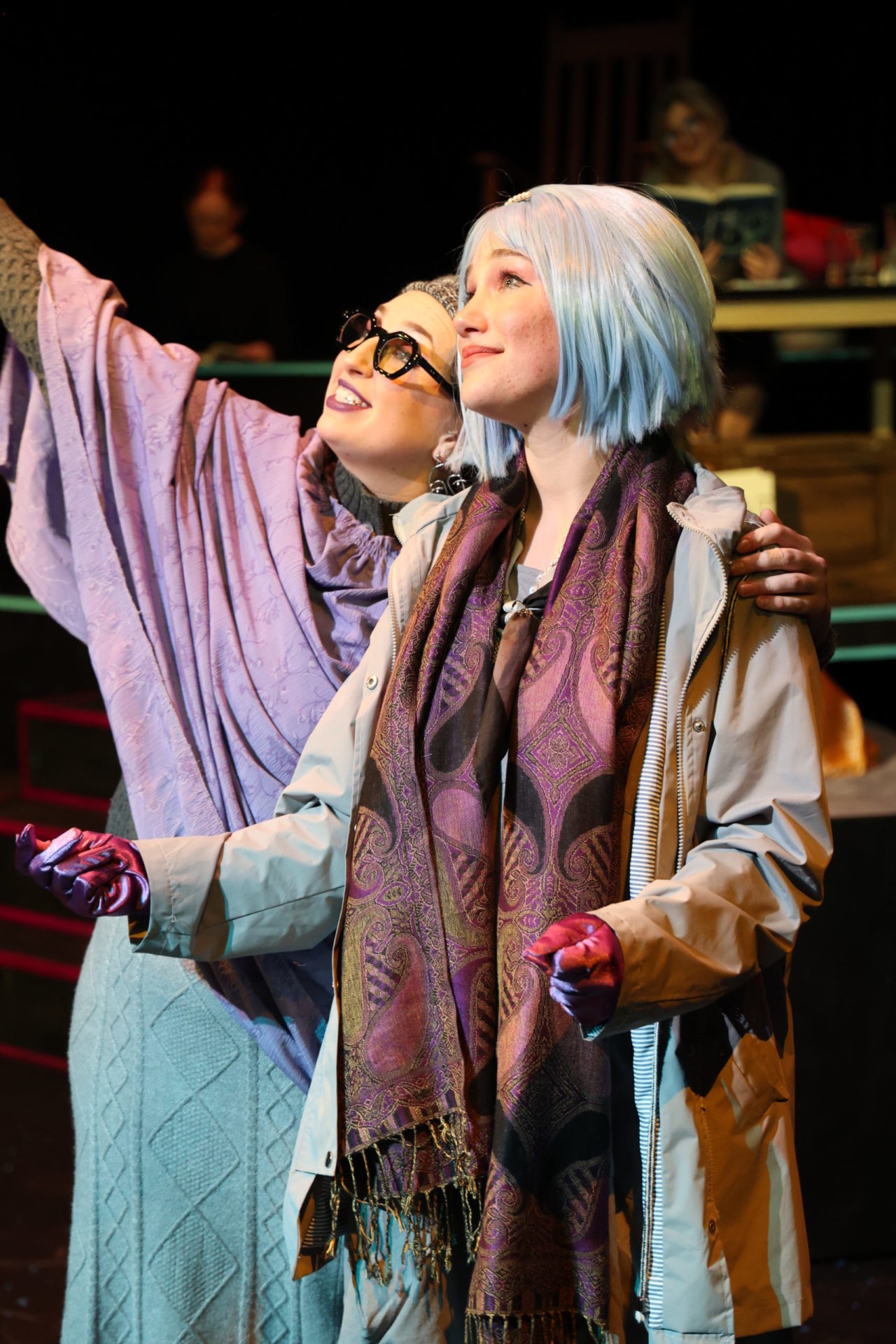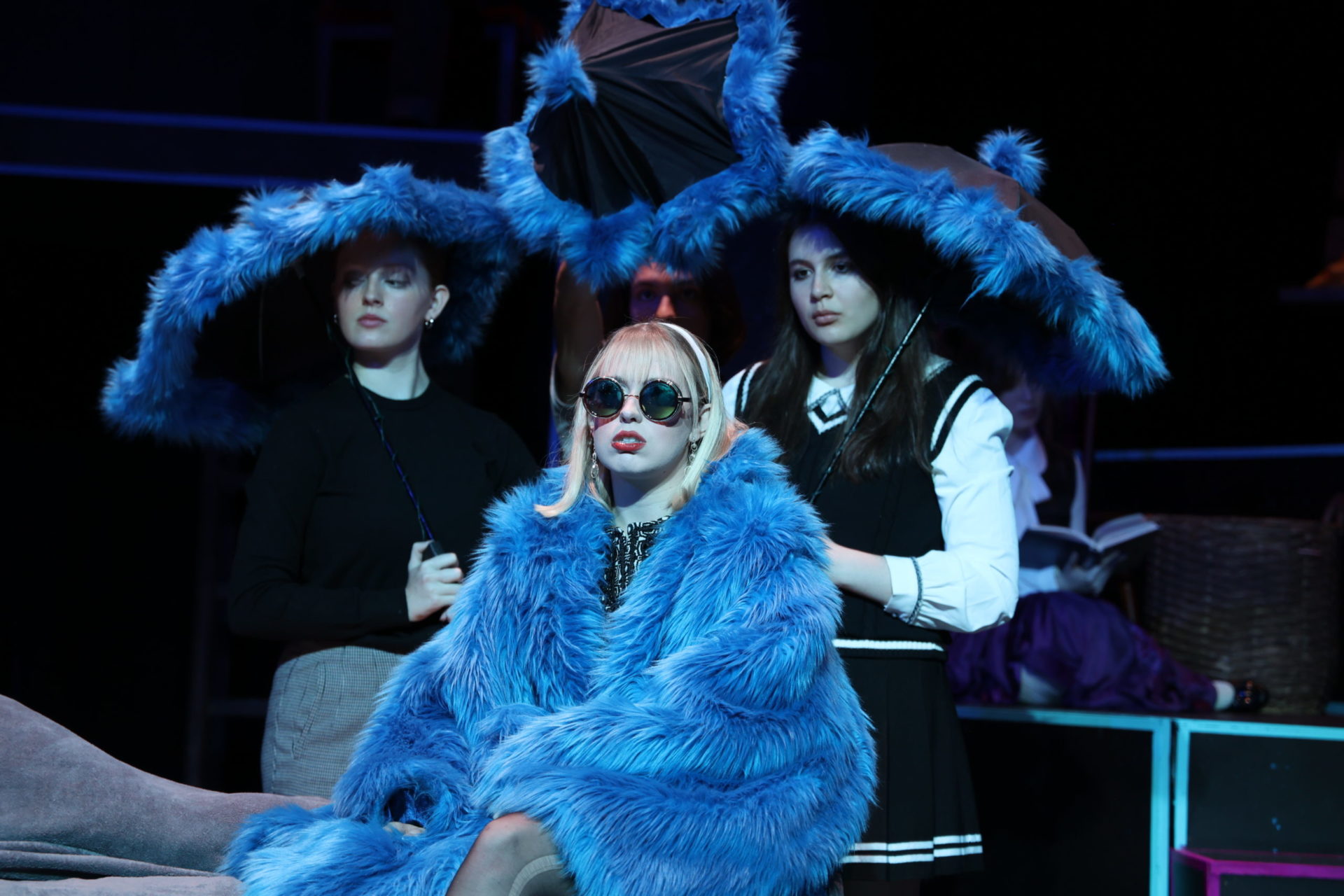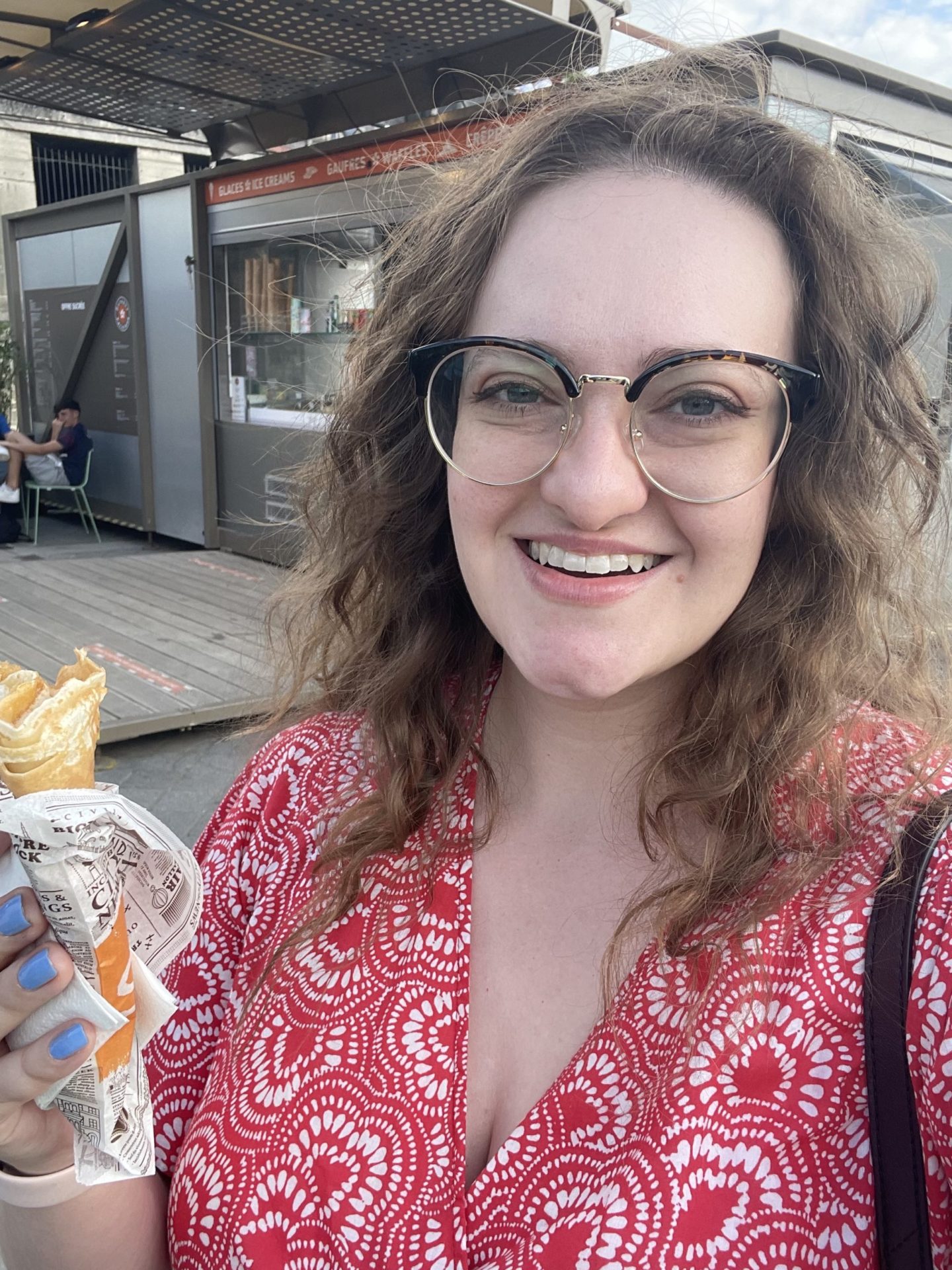From the Black Box:
Belmont’s Production of A Wrinkle in Time
Belmont’s Blackbox Theatre production of A Wrinkle in Time, an adaptation of Madeline L’Engle’s 1962 novel of the same name, ran November 10th-12th and 16th-18th. The show ran 100 minutes with no intermission. An intimate setting, there were perhaps 100 seats at the most, surrounding three sides of the stage.

Set in 1962, the year that the book was released, the characters slowly filtered in as the room filled with audience members. Most notable was Calvin’s character, played by John Harkins, who came out with his basketball and found three audience members to come up and play foursquare with him. When the play began, all of the characters grabbed a copy of A Wrinkle in Time and started to read. Using clever designs, effects, and acting, the audience was transported to other worlds to fight evil and overcome darkness.
If you’ve ever read A Wrinkle in Time, you know that it is a quite fantastical science fiction novel that takes place on multiple planets with many different kinds of creatures and aliens. I was curious to see how a small production could present those places and beings. Tracy Young’s adaptation has some truly inspired choices. For example, when Mrs. Whatsit transforms into an angelic being, the actor climbs up a wheeled stage ladder letting Meg, Charles Wallace, and Calvin “climb onto her back” by stepping onto the ladder. Later, when Charles Wallace is taken over by IT (the evil darkness), the actor goes and sits down and IT’s henchman appears holding a puppet dressed as Charles Wallace. The henchman and Charles Wallace speak in tandem to illustrate IT’s hold over him. Something that I found completely unnecessary in this particular adaptation was Reader #1’s Tesser Experiments. Throughout the play, in the background, Reader #1 performed various experiments (all labeled on poster board). At the end Reader #1 holds up a first place trophy that they have won in the science fair saying, “In conclusion: the universe exists simultaneously, everywhere, at once. With imagination and love, you can go anywhere.” This is not a quote from Madeline L’Engle, but something that Young has added. I understand that Young is using Reader #1 to illustrate ways that the book has impacted young lives. However, the fact that the book has been made into numerous plays and movies speaks for itself. The experiments were distracting and detracted from the story, rather than enhancing it.
The Blackbox Theatre improved on Young’s adaptation in a couple of ways. First, they added a few spots of humor and whimsy that aren’t written into the play. For example, when Mrs. Whatsit hears Meg discussing the tramp who has stolen 12 sheets, she looks down at the purple sheet she is holding (and has stolen) and she throws the sheet to a member of the audience to dispose of it. Second, the re-imagining of Aunt Beast was simply wonderful. Young’s adaptation, faithful to the novel, describes Aunt Beast as gray with fuzzy tentacles. The Blackbox Theatre instead had the actor wearing a huge bright blue fuzzy coat surrounded by three other actors with big blue fuzzy parasols. While almost certainly this was devised from a lack of funding to make movable tentacles, it was so fun and creative that I enjoyed it more than I would have liked any animatronic appendage.
While all of the actors were well cast, Charlotte Francis stood out in her role as Meg Murray, perfectly conveying her courage, quirkiness, and stubbornness. There is no one that can’t identify with the awkwardness of teen years and Francis reminded us of just how hard it can be to make it through high school when you’re weird. Katie Fraley also stood out in the smaller role of Mrs. Who. Mrs. Who was always my least favorite of the three mystical beings, but Fraley changed that for me. She had terrific stage presence, making the character charming and endearing. The cast and crew put on a great performance and I was glad to be able to enter the world of tesseracts with them. Madeline L’Engle said, “with each book I write, I become more and more convinced that the books have a life of their own, quite apart from me.” How right she was and how lucky we are to continue to see her story evolve.



